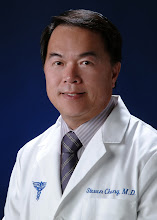Aging Scalp and Gray Hair
ISHRS 2014
Desmond J. Tobin, PhD, FSB, FRCPath.
Desmond J. Tobin is Professor of Cell Biology and Director of Centre for Skin Sciences at University of Bradford.
Although humans have over 5 million individual hair follicles on their bodies, most attention be it academic or commercial is focused on the paltry 2% of these that are distributed on our scalps.
The hair follicle produces several different types of hair fiber during a normal lifetime. It is worth emphasizing that hair will grow up to 4 meters all within the same single hair follicle. Hair growth rates also vary significantly during human aging and for different body sites. Indeed, when these are averaged for post-40 year old non-balding males, hair actually grows most rapidly and with greater individual fiber thickness in certain body sites in individuals during their 50-70 years of age.
Increasing age can leave its mark on several phenotypic properties of the hair fiber. While the most visually apparent of these include hair thinning, hair loss, reduction in the rate of growth, pigmentation loss, aging can also affect change in the surface morphology of hair. The hair follicle is somewhat unusual however, in that some of its interactive cell systems appear to be non-essential for overall hair follicle survival. Indeed, strikingly gray and white hair follicles may paradoxically grow hair even more vigorously than their pigmented predecessors.
Much of the recent research has focused on both the oxidative stress that appears to increase with aging and to which the hair follicle melanocytes appears especially sensitive, and the fate of hair follicle melanocyte stem cell capacity. This is likely to reflect significant differences in the epidermal and follicular melanocyte microenvironments. The hair follicle may provide richer information in this context. Pre-proliferative, proliferative, differentiated, terminally-differentiated and ‘senescent‘ melanocytes all co-exist in the same growing hair follicle.
